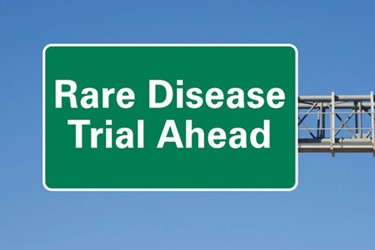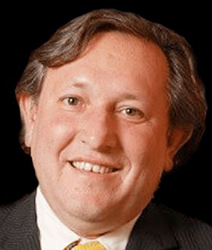Overcome The Challenges Of An Ultra-Rare Disease Trial

By Ed Miseta, Chief Editor, Clinical Leader

ArQule is a personalized medicine company working in the oncology space to develop treatments that target specific mutations. The Massachusetts-based company faces many challenges in this space, including one that is common to many cancer treatments. When ArQule increased the dosage of its treatment, there was an increase in efficacy. Unfortunately, there was also an increase in the level of toxicity. This dilemma left the company unsure about its next course of action.
“At that time, we were approached by a group at the NIH which informed us they found the exact same mutation occurring in patients with an ultra-rare overgrowth disease,” says Dr. Brian Schwartz, CMO for ArQule. “The disease is Proteus syndrome, which was formerly known as Elephant Man’s disease. They had been working on that disease for years and hoped that we could partner to help those patients.”
With Proteus syndrome, early on in utero a couple of cells aquire a somatic mutation. However, the mutation can occur in different locations leading to abnormal overgrowth of specific tissues in patients. One patient might have an elongated leg or arm, a lump on their body, or be CNS impaired. No two Proteus patients are the same, and 25 percent will die of cancer or vascular abnormalities before the age of 16.
For the most part, Proteus syndrome is still a mystery to researchers. There are no models or guidance, and no trials have been performed on patients. After contacting ArQule, the NIH decided to test the drug in a clinical trial. There was no animal model, so Schwartz describes the study as a Phase 0 trial, but the drug was found to be biologically active.
 ArQule decided it would be best for ArQule to start a parallel program to speed up development of the drug. Patient groups got wind of the company’s efforts and ArQule was soon contacted by two patients struggling with overgrowth disease. One was a young woman with both cancer and Proteus syndrome, which occur together in about 25 percent of patients. The other was a 16-year-old female with a similar overgrowth disease who had been sent to hospice because of complications she faced from the disease. Since both were located overseas, Schwartz first had to find a physician willing to treat them. They were given the treatment, which is a small-molecule drug taken once a day. Both patients are receiving benefit with their disease regressing and related symptoms improving.
ArQule decided it would be best for ArQule to start a parallel program to speed up development of the drug. Patient groups got wind of the company’s efforts and ArQule was soon contacted by two patients struggling with overgrowth disease. One was a young woman with both cancer and Proteus syndrome, which occur together in about 25 percent of patients. The other was a 16-year-old female with a similar overgrowth disease who had been sent to hospice because of complications she faced from the disease. Since both were located overseas, Schwartz first had to find a physician willing to treat them. They were given the treatment, which is a small-molecule drug taken once a day. Both patients are receiving benefit with their disease regressing and related symptoms improving.
“With these two patients, there was no clinical trial conducted,” states Schwartz. “Both were treated via a compassionate use request. Although the patients improved, we did not receive the data you would normally get from a clinical trial. For me, that was a big learning experience. You want to help patients, but simply granting these types of requests does not move you towards a regulatory approval providing a treatment option for all affected individuals. Since the disease is so rare, we were not sure what data we needed to collect. In retrospect, had we collected the data on those two cases, we may have been able to present those results to a regulatory agency earlier.”
No Natural History
Fortunately, the study conducted at NIH did collect meaningful data. That, along with the results of the compassionate use cases, allowed ArQule to approach regulatory agencies to discuss a program for approval of the treatment. If a registration study results in product approval, ArQule will face additional challenges.
“In the ultra-rare disease space, one challenge is the lack of a natural history of the disease,” says Schwartz. “Even when there is no therapy available, researchers must develop a system to document that natural history. For Proteus syndrome, there are less than 200 cases that have ever been reported in literature. There are estimated to be hundreds, not thousands, of Proteus patients in the developed world. In comparison, breast cancer will have over 200,000 new patients diagnosed in 2018.”
In ultra-rare diseases, that natural history is vital since the small number of patients means researchers cannot perform a placebo-controlled trial. Fortunately, a group or researchers at the NIH have, for the last 15 years, been collecting data on the natural history of Proteus syndrome. That has given ArQule some insight into the progression of the disease. Researchers at NIH collected data from patients, x-rays, and even patient photographs of affected areas. Still, the data is not perfect. The patients were not seen at routine intervals and much of the data came from patients located overseas. The difference in how patients are impacted made producing a natural history even more difficult. Still, for the first time, the effort resulted in meaningful data on the patient journey.
Finding A Common Feature
Although patients with Proteus syndrome look different, the researchers at NIH were able to locate a common feature between them. Every patient had lesions under their feet. Photographs were taken of those lesions and that will likely serve as the endpoint in clinical trials conducted by ArQule.
“That is the only common feature amongst patients,” says Schwartz. “The only negative with that endpoint is that a number of patients have had their feet amputated as a result of the lesions. That further reduces the size of the available patient population.”
Finding patients to participate in trials is the second major challenge faced by ArQule. There are few patients and they are located throughout the world. ArQule began assembling a list of patients for its upcoming study and those patients are in the U.S., Europe, Canada, Saudi Arabia, Peru, China, and Australia. Having patients from multiple countries scattered all over the globe creates a financial hardship and a logistical nightmare for ArQule.
“Ultra-rare diseases tend to not be financially rewarding endeavors for pharma companies,” says Schwartz. “For drugs designed to treat rare diseases and have received an orphan drug designation there are voucher programs in place that can help companies recoup most of their costs, but you go into this effort knowing your future revenues will be limited.”
A Pediatric Population
Another challenge is the fact that Proteus syndrome is found primarily in children. Schwartz notes conducting trials on children with rare diseases can be difficult. When these children are born, they appear healthy and perfectly normal. At around one year, a leg might start growing longer than the other. No one understands why, and the patient could literally visit dozens of doctors or specialists. Eventually a geneticist will perform the right test and correctly diagnose the disease. By then, the condition of the patient will have worsened considerably.
“These children and their parents have been bumped around from one physician to another being mis-diagnosed for many years,” says Schwartz. “They have been through a lot, and now you have to ask them to submit to a clinical trial. They will need to make monthly visits to a clinic to be seen by a physician who may need to anaesthetize the child and administer an experimental treatment. Convincing the parents to allow the child to enter the trial and see it through to the end can be a difficult proposition. Understanding the needs and the concerns of the parents and caregivers is essential to making that enrollment happen. You have to understand what they have already been through, and then take the time to explain to them what the treatment is expected to do and how it might help their child.”
Finally, Schwartz notes that when working in the rare disease space, no decision will be more important than the selection of your CRO partner. Schwartz has partnered with many CROs over the 25 years he has worked in drug development. He believes it takes a very special CRO team, a true “partner,” to conduct a rare disease trial correctly.
“A good CRO will become a part of the patient’s team,” states Schwartz. “They can’t just check off boxes and collect data. They must get to know everyone involved in the study and understand the disease and what families are experiencing. They must know what the families have been through and what they will experience. They must also understand the needs of the physicians, who will generally be taking part in a clinical trial for the first time. It is up to the CRO to educate everyone on the process and make sure everything goes off without a hitch.”
Choose Your CRO Carefully
ArQule has already begun its search for a CRO partner. The company interviewed six CROs but after half-day presentations by each company, ArQule felt only two really understood what it takes to develop a drug in the ultra-rare disease space. Both understood what the company was looking for because they had been through the process in the past.
“For a disease like Proteus syndrome, I believe you need not only a CRO with experience in rare disease but also a partner that can also provide the personalized attention this disease requires,” says Schwartz. “For that reason, the mid-sized CROs are a sweet spot. They are not too large but are big enough to have the relevant expertise you need. The two CROs that impressed us the most were ones that had taken a rare disease treatment from Phase 1 all the way through to approval. They presented us with a strategy, walked us through all of the challenges we would face, and allowed us to meet the key players on the project team.”
Schwartz adds that when a CRO truly has an interest in rare diseases, you can see it in their presentations. They tend to be very hands on and have a clear understanding of the complexities of these trials and the procedures that will have to be performed. He notes they also tend to be very patient centric. The two CRO finalists went so far as to call on patient advocacy groups for advice prior to preparing their strategy and approach.
Schwartz also gives a nod to those patient advocacy groups, noting rare disease trials would not occur without their support. The rarer the disease, the more critical their role. In ultra-rare diseases, these groups are generally formed by mothers who had a child with the disease. They understand the patient and the patient’s family journey and are a big help in creating registries and assisting with recruitment. Social media is also important, which Schwartz calls a blessing to the industry when used correctly. Social media now allows patients and their families to find sponsors, instead of the other way around.
